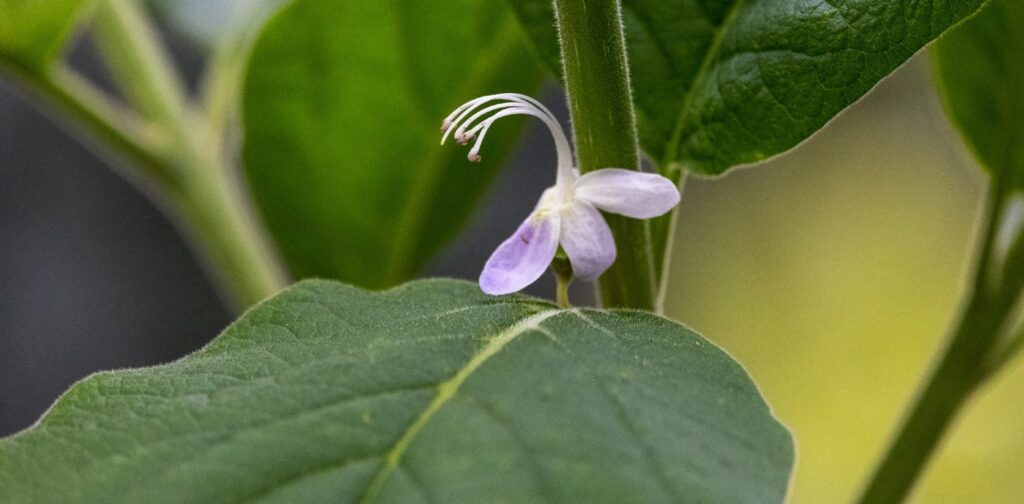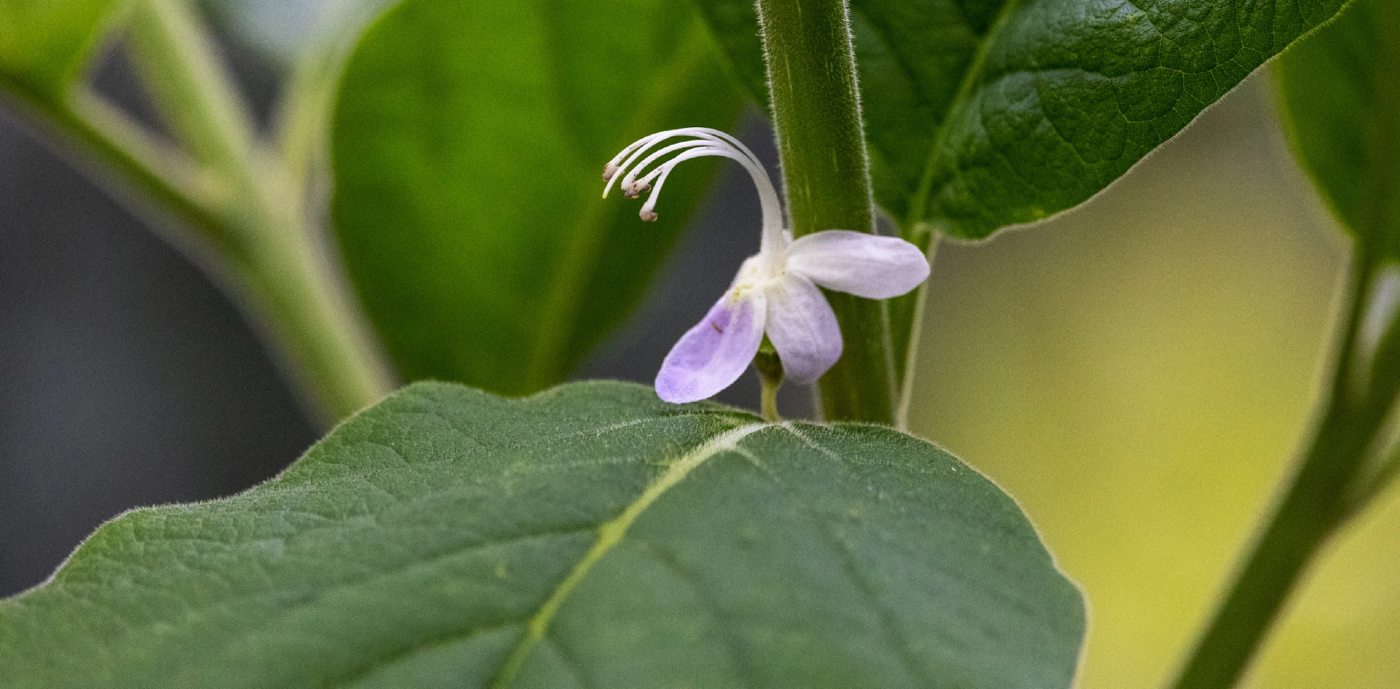
In a greenhouse in Missouri, a tree listed as critically endangered produced a flower which had never been recorded before by science in the perfect metaphor for the species’ chances of survival.
The botanists caring for it believe there’s no question they can save the tree since collecting pollen from this flower, as they can now cross-pollinate its thirty-strong sapling neighbors to restore genetic diversity.
Karomia gigas is a member of the mint family, and is also related to oregano, rosemary, and thyme. It grows wild only in East-Central Africa, in Tanzania, and in the past in Kenya. It’s so unknown there’s no common name for it in English, Swahili, or any other African language.
The flower it produced consisted of five purple petals tugged down towards the stem, and four long pollen stamens protruding from the center.
Growing straight up to heights of 80 feet, it’s thought one reason there is no image of the flower in the scientific record is that an adult K. gigas doesn’t produce branches until halfway up the trunk, so the rapidly-wilting flowers simply emerge too high to be seen.
The un-minty nature of the flowers lead scientists to hypothesize it could be a self-pollinating tree, and they hope to find more flowers in the coming months that will allow them to strengthen the genetic diversity of the remaining trees.
They can clone individual trees from cuttings, but that doesn’t do anything to increase genetic diversity, which is key to ensuring the long-term survival of the species and its ability to resist disease.
Growing hope
As well as growing in a difficult-to-replicate kind of soil substrate consisting primarily of old corral and termite leavings, K. gigas is very susceptible to fungus, and its wood is similar to teak, and so is occasionally poached. All this pressure puts the tree among the most endangered of the 60,000-known tree species.
It was discovered in Kenya in 1977, then rediscovered in Tanzania in 1993 after all the Kenyan specimens died out.
Apart from the thirty saplings growing in the Missouri Botanical Garden in St. Louis, the Tanzanian Forest Service estimate there are two dozen or more others, but only in Mitundumbea Forest Reserve and Litipo Forest Reserve in Tanzania, both of which are protected areas characterized by flat woodlands that used to be the ocean floor.
“On one side of the coin it’s a little scary because very rare species like this are depending upon us and we can’t get it wrong,” writes Andrew Wyatt, Senior Vice President of Horticulture and Living Collections at the Missouri Botanic Gardens, the oldest continually operating gardens in the nation.
“Personally, and I know others on my staff feel this way too, it is actually amazing and exhilarating. It is such an honor to use one’s skill to save a species from extinction.”
“As far as survival, we’ve got this one,” says Wyatt, this time to National Geographic. “We can actually make sure it does not go extinct. The idea of actually preserving the species is entirely possible. It’s protected in Tanzania. We have collections in the botanical garden. Once we’ve got enough seed, we hope we can store it [in a freezer] and create a buffer between loss.”
It’s good he and his staff are so confident. Based on how many houseplants this reporter has killed, he can only imagine the pressure they’re under.
MORE: ‘Huge Surprise’ as Giant River Otter Thought to be Extinct Pops Up in River in Argentina
BLOOM Positivity In Friends’ News Feeds—Share This Story…




















